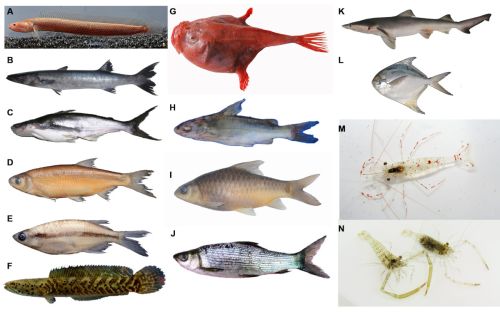Integrated taxonomy, conservation and sustainable development: Multiple facets of biodiversity
28 April 2021 | Teena Jayakumar, T.K, T.T. Ajith Kumar, Mahender Singh, Vindhya Mohindra, Rajeev K. Singh, Rajesh Dayal, J.K. Jena and Kuldeep K. Lal | 1560 Downloads | .pdf | 528.3 KB | Freshwater finfish, Genetics and Biodiversity, India, Marine finfish, Molluscs (shellfish and other), Ornamentals, Shrimp
Considering the many threats to biodiversity, new knowledge of existing species and discovery of new species and their ensuing study is strongly warranted for conservation and sustaining biodiversity for the future.
As a signatory to the United Nations Convention on Biological Diversity, India enacted the Biological Diversity Act, 2002 to regulate access to and use of its biological resources. The Government of India has initiated mission mode programs such as the Deep Ocean and Biodiversity Missions for exploration, mapping and conservation of biodiversity.
Focussed explorations from the ICAR-National Bureau of Fish Genetic Resources (NBFGR), an organisation mandated for cataloguing of genetic resources of India include surveys of various ecosystems ranging from fauna of deep sea to the high-altitude regions of the Himalaya, falling under diverse biogeographic zones and unexplored regions of the country, including North-eastern India, Western Ghats, Lakshadweep and the Andaman and Nicobar Islands.
This article describes the results of these efforts, which include discovery of 14 new fish species and six new distribution records between 2015 to 2020.
Creative Commons Attribution.

